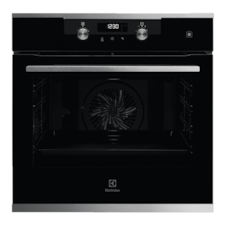Your complete guide on how to use an oven
Taste | 7 minute read |
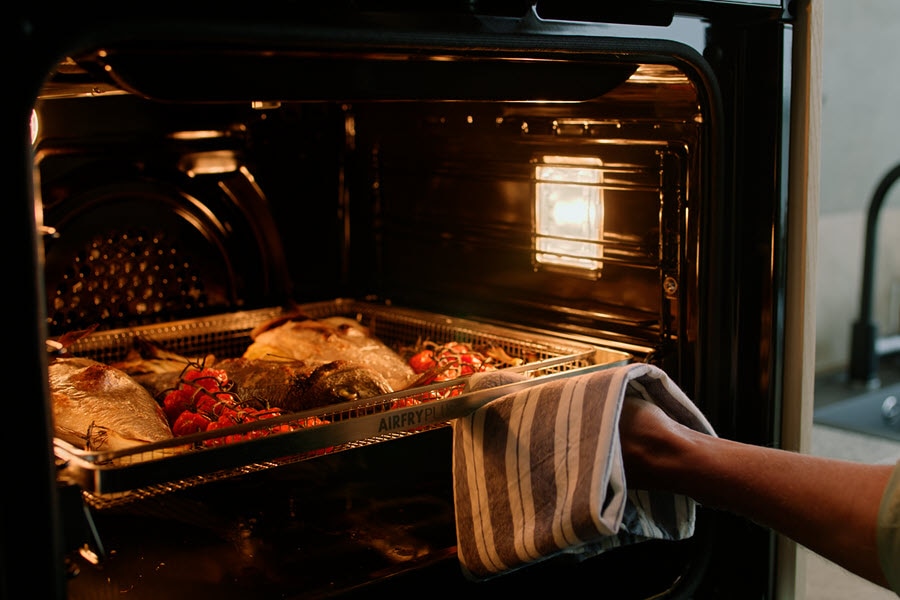
Figuring out how to use your oven at home can be pretty daunting, especially if you’re not at home in the kitchen. But in reality, it’s easier than you might think, as long as you keep a few basic things in mind. With this guide, Electrolux Thailand will help you on your oven cooking journey.
Below are some basic things you should know about how to use an oven:
1. Determine the kind of oven you have
2. Find a location to put your oven rack
3. Preheat your oven to the right temperature
4. Identify and work around your oven’s hot spots
5. Keep your oven clean
Find out what kind of oven you have
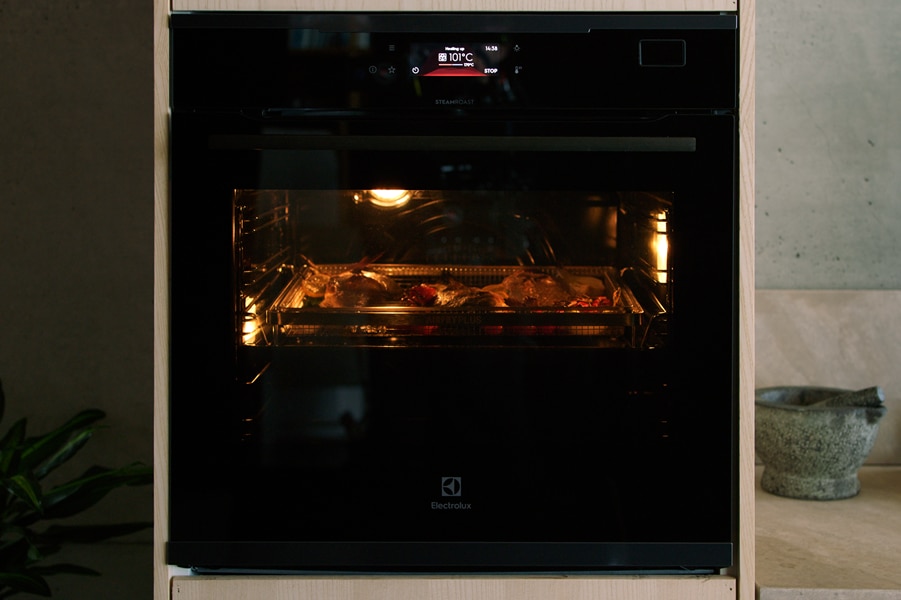
You need to know what kind of oven you’re dealing with to be able to use it efficiently. There are several different types of ovens, and they need to be used in different ways. Here are the most important varieties:
Gas ovens
Gas ovens use a gas-fuelled burner to cook your food. Gas is brought to the burner and ignited, and burns until the oven reaches the set temperature. The burner is then automatically turned off until the temperature lowers again. It then turns on to reach the set temperature again.
If your home already has a gas connection, gas ovens are relatively cheap to install and run, though they are notorious for their uneven heat distribution.
Electric ovens
Electric ovens use electrically heated coils to cook the food. The coils heat up relatively slowly, but then keep a constant temperature more steadily than a gas oven can. While electric ovens can be more expensive to run, many people also find them more convenient, especially for baking and broiling.
Convection ovens
One of the most recent evolutions of the oven, convection ovens add more heating elements and a fan to reach more stable temperatures. Convection ovens usually cook your food most evenly when compared to other oven types. They also cook your meals quicker than other ovens, so keep that in mind when following recipe instructions.
Proper oven maintenance is key to keeping it working efficiently and extending its lifespan. In this video, you’ll get essential tips on how to clean your oven, maintain its performance, and avoid common mistakes that can affect cooking quality. Whether you use your oven daily or occasionally, this guide will help you keep it in top shape with minimal effort.
Where to place your oven rack
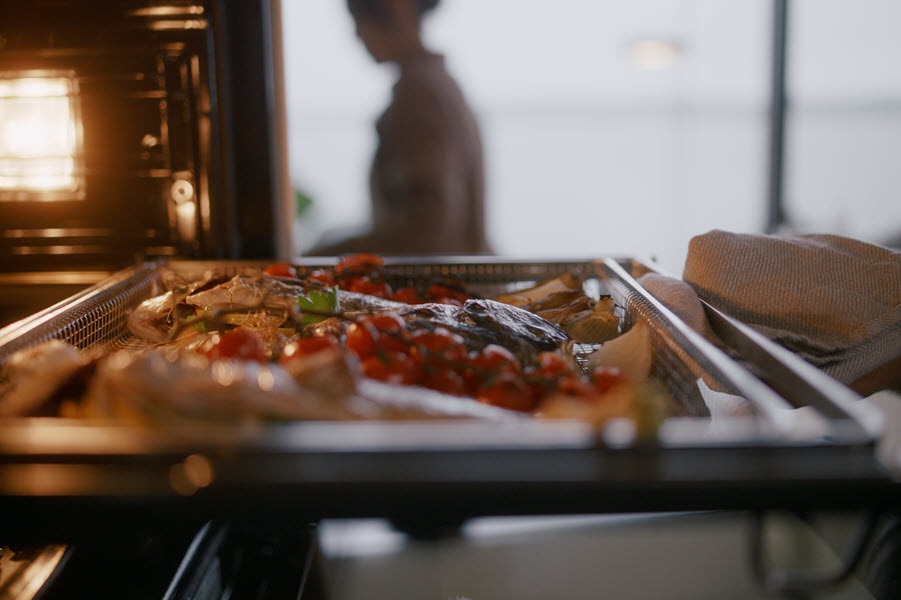
For about 90% of all cooking cases, the answer to the question “Where in the oven should I place my food” is “in the middle”. Ovens are designed in a way that makes the very middle the place with the most even heat distribution, so most foods will cook very well there.
However, here are some additional tips:
- If you’re baking things that should have an extra crispy underside, place the rack near the bottom
- If you’re going for a crunchy crust or broiling, place it near the top.
- If you’re cooking more than one batch of something, such as cookies, you might want to put one sheet near the top, one near the bottom, and then rotate them. In a convection oven, however, this isn’t as important, since the heat gets circulated evenly.
>>> Read more: Frequently asked questions about Electrolux ovens
What you should know about preheating your oven
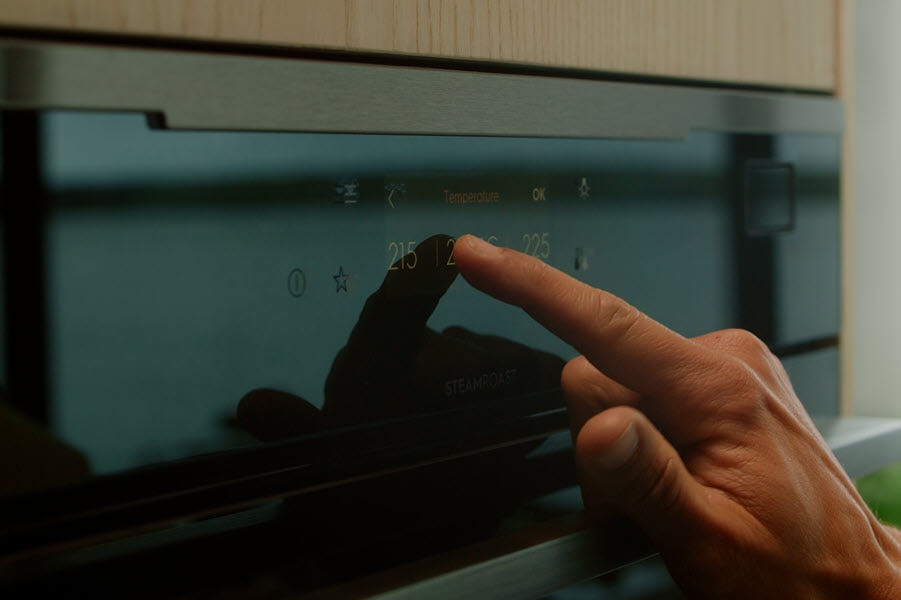
All ovens need to be preheated, whether they’re gas, electric, or convection. The only difference is the time it takes for them to reach the best cooking temperature. Gas ovens generally reach high temperatures much more quickly than other types, with the oven often ready for cooking within 5 to 10 minutes of turning it on. Electric ovens and convection ovens need a bit more time, so allow for 15 to 20 minutes for preheating. Modern ovens will usually let you know when preheating is done, either with an indicator light or on an LED screen.
When you’re preheating, remember to:
- Not open the oven door unnecessarily, since the heat will escape and the preheating will take longer
- Take out the cooking trays you need before turning on the oven
How to work around your oven’s hot spots
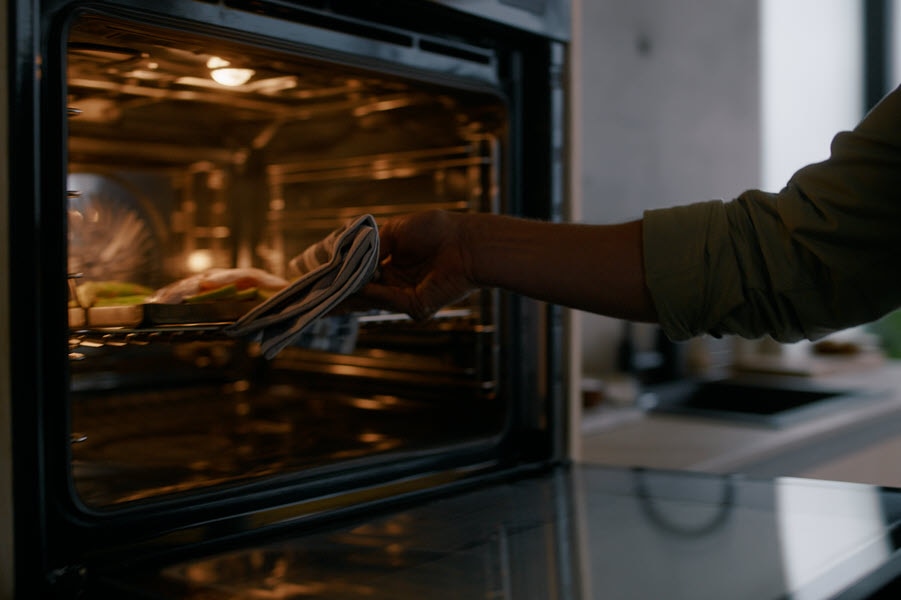
Ovens often have areas with more intense heat and areas with less heat. Those hotter sections, the so-called “hot spots”, can be used to cook food more quickly, but also put your food at risk of burning. Gas ovens are most notorious for these hot spots, since the heat distribution in gas ovens isn’t as even as it is in electric or convection ovens.
Here are some tips on how to deal with your oven’s hot spots:
- Find the hot spots by putting slices of bread on a cooking tray and putting them in the oven. Bread that browns more quickly indicate hot spots.
- To make sure your food cooks evenly, turn your cooking trays around frequently or use a rotating cooking tray.
Check out our helpful tutorials on how to use Electrolux ovens.
How to keep your oven clean
Keeping your oven clean is imperative for getting good cooking results. Not only is grime and residue unsightly, but when heated it also creates smells that may then linger on whatever it is you’re cooking.
Many modern ovens come with a self-cleaning function, usually in three varieties:
- Pyrolytic ovens burn grease and sugar residue, so you only have to wipe up a bit of ash
- Catalytic ovens work similarly, but only take care of grease, while sugar residue is unaffected
- Steam-cleaning ovens soften up the dirt for you, so you only have to wipe It off with a rag
For manual oven cleaning, you also have several options:
- Store-bought oven cleaning products: Work fast, but often use strong chemicals. Always follow the instructions when using these products.
- Baking soda and vinegar: The dream team of home cleaning also takes care of your oven. Apply a paste of water and baking soda to your oven’s surfaces and let it work overnight. Wipe off, spray with vinegar, and wipe again.
- Lemons: Cut two lemons in half and put them in an oven-proof bowl filled with water. Place the bowl in the oven and turn it to 120 degrees for about an hour. Open the door and let it cool off. When the inside of the oven is safe to touch but still warm, wipe the surfaces with a wet cloth.
Read more:
- How to clean your oven - the simple way
- Pro tips for using your oven: Preheating, Cooking and Cleaning
Frequently asked questions about how to use an oven
-
What is the use of an oven?
An oven is a kitchen appliance used for cooking, baking, heating and grilling a wide variety of food items. It creates a regulated space of intense heat to facilitate the process of cooking food.
-
How long does it take to preheat an oven?
It typically takes around 12 to 15 minutes to preheat an oven to reach 175 degrees Celsius.
-
Can I put food in oven while preheating?
Placing food in the oven during the preheating phase is not recommended. This is due to potential inconsistencies in the oven temperature, which can result in uneven cooking. Furthermore, opening the oven door to insert the food can lead to heat loss and disrupt the desired oven temperature.
-
What should I do when my oven smells for first time use?
It’s completely normal if your oven smells for first time use. You can begin by using a moist cloth to wipe the appliance. Additionally, heating the oven at 250 degrees Celsius for 30 minutes can aid in eliminating any unpleasant odours emanating from the new oven.
-
Can I put aluminium foil in the oven?
Yes, you can put aluminium foil in the oven but make sure you use it correctly. Don't use aluminium foil to line the bottom of the oven as this can cause a fire.
How to cook daily meals with an oven
Using your oven to prepare everyday meals can save time and deliver delicious results. Here are three easy recipes with video tutorials to guide you through creating tasty dishes at home.
1. How to bake the fluffiest cheesecake
Begin by blending cream cheese until smooth, adding sugar, eggs, and flavorings carefully to avoid overmixing which can create cracks. Prepare a buttery crust, usually from crushed biscuits, as a base. Bake the cheesecake slowly at a moderate temperature, often in a water bath to ensure even cooking and moisture. Allow it to cool gradually to set perfectly and achieve that soft, fluffy texture everyone loves. This method ensures a creamy center with a delicate crumbly base.
2. How to roast the juiciest chicken breast
To keep chicken breasts juicy, start by seasoning them thoroughly with salt, pepper, and your choice of herbs or marinades. Preheat your oven to a relatively high temperature to seal the exterior quickly, locking in the juices. Roast the chicken breast on a tray or roasting pan, using a meat thermometer if possible to avoid overcooking. Rest the chicken after roasting to allow the juices to redistribute. This results in a tender, moist interior with a flavorful, crispy skin.
3. How to make the best roast potatoes
For perfectly crispy roast potatoes, start by peeling and cutting them into even pieces. Parboil the potatoes briefly until just tender, then drain and give them a good shake to roughen the edges—this creates more surface area for crispiness. Toss the potatoes in hot oil or fat and arrange them on a hot roasting tray. Roast at a high temperature, turning occasionally until they develop a golden-brown, crisp exterior while staying soft and fluffy inside.
Check out some of our freestanding electric ovens for your compact kitchen:
-
- 4-in-1 oven toast, bake, grill and rotisserie.
- AirFry your food for a fried taste without oil.
- Convection function for roasting or baking.
-
- 4-in-1 oven toast, bake, grill and rotisserie.
- AirFry your food for a fried taste without oil.
- Convection function for roasting or baking.
discontinued
-
- 4-in-1 oven toast, bake, grill and rotisserie.
- AirFry your food for a fried taste without oil.
- Convection function for roasting or baking.
Discover Electrolux built-in single ovens:
-
- Different oven functions for diverse cooking.
- AquaClean for a natural, easy clean.
- Pizza program grills above and cooks from below.
-
- Different oven functions for diverse cooking.
- LED timer display sets exact cooking times.
- AquaClean for a natural, easy clean.
-
- SteamBake for bakery-style bread at home.
- Smart food probe monitors core temperatures.
- Easy pyro cleaning at high temperature.
discontinued

Responsible for 30% of global emissions, the food industry is one of the biggest contributors to climate change from production to consumption. Discover Electrolux’s Make it Last – Taste campaign that strives to make sustainable eating the preferred choice with our UltimateTaste 900 ovens:





